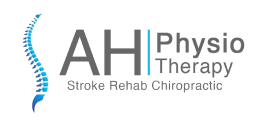Written By Dr Annu (MPT Neurology) 18 years of clinical experience : Call 8146758243 for appointment
Cervical Pain or neck pain is a common condition affecting almost every second person around us, especially in the corporate world where most of us are hooked on computer and phone screens with neck bent forward. Cervical pain can be caused by various factors like poor posture, injury, muscle spasms to underlying medical conditions. In this article, we will explore the symptoms, causes and presentation of cervical pain and will also discuss preventive tips including physiotherapy based exercises to live a pain free life.
Symptoms of cervical Pain
Cervical pain can present itself in variety of symptoms depending on the severity of condition. Common symptoms include:
- Neck stiffness: Difficulty in moving neck from side to side, patient often holds neck in an awkward position complaining of pain in movement of neck.
- Localised pain: Patient may experience sharp or dull pain at a specific point in the neck and this pain usually worsens with movement on a specific side.
- Headaches: Cervicogenic headaches are caused by tension in cervical muscles leading to irritation of nerve supplying to skull muscles leading to headaches which often spread to forehead.
- Radiating pain: Cervical pain due to compression of exiting nerves from cervical spine can lead to pain radiating to arms or hands.
- Numbness or tingling: A sensation of pins and needles in the arms or hands, often leads to numbness feeling.
- Muscle spasms: Sudden, involuntary tightening of neck muscles leading to pain around neck muscles.
- Reduced range of motion: Neck pain hinders in free range of motion at the neck, as moving or bending neck forward, backwards or sideways leads to pain.
Common causes of cervical Pain
Cervical pain can result from various factors like:
- Poor Posture: Sitting for long hours in slouched position or using poor ergonomically designed workstations can also lead to cervical pain. Slouching while sitting or sleeping in awkward positiin can also lead to neck pain.
- Muscle strain: Overuse of muscles, often due to lifting heavy objects or doing repetitive tasks can lead to muscle strains or spasms.
- Degenerative changes: Cervical spondylosis is most commonly caused by age related wear and tear, bone end plates degrade and spurs compress the surrounding tissue resulting in pain.
- Whiplash Injuries: Sudden halt or jerk on a highway can lead to whiplash injury of neck which is due to sudden forward and backward force applied to neck tissues. It presents as neck pain and stiffness of neck muscles.
- Herniated Disc: Slip disc due to sudden forced lifting or weight can lead to herniation of disc leading to compression of exiting nerve roots.
Prevention tips for Cervical Pain
Cervical pain can be prevented by adopting good posture while working on laptop or phone, doing regular neck strengthening exercises. Find some effective tips here:
- Follow Good posture: Sit upright with your back supported by a chair. Keep a stool or stepper to keep feet rested flat on it. Avoid slouching on the chair. Keep the screen at your eye level to avoid looking down. And last but not the least, use handsfree devices for long phone calls.
- Use good Supportive cervical pillow: Pillow should maintain the natural curve of the neck while sleeping. In side lying, the space between shoulder and neck should be properly supported with pillow.
- Stay Hydrated: Its common to see muscle cramps due to dehydration, so keep yourself well hydrated, especially during sports activities and humid days.
- Ergonomic adjustments: Use proper chair and desk setup to maintain good posture at office.
- Stress Management: Practice deep breathing exercises, meditation and progressive muscle relaxation techniques for stress management. Stay aware of the tension in your shoulder muscles and drop them whenever you feel them raised up in stress.
Neck Exercises for pain relief
- Neck stretches: Sit in a chair and slowly tilt your head to one side , bringing your ear towards shoulder. Hold this position for 10-20 seconds and then repeat on the other side. You can do 3-5 reps.
- Chin tucks: Sit or stand straight and gently tuck your chin by pulling it backwards, aligning it with your spine. Hold for a count of 5 seconds and release. Repeat 10-15 times.
- Shoulder rolls: Keep hands on your shoulders and roll them clockwise and anticlockwise. Do 10-15 reps.
When to consult a Physiotherapist?
If your neck pain is persistent or there is a sudden jerk and your neck is unable to move freely without pain, its better to see a physiotherapist. Physiotherapy is an excellent solution for managing cervical pain. An expert physiotherapist can help you with manual techniques, personalized exercise program and dry needling to relieve muscle spasm. These physiotherapy techniques can significantly reduce cervical pain.
In case you are suffering from cervical pain or neck pain, consult our expert physiotherapist near you. We are located in TDI city Mohali, Punjab.
BOOK YOUR APPOINTMENT ON 8146758243

